DISCOVERING THE PALAIS-ROYAL, PARIS
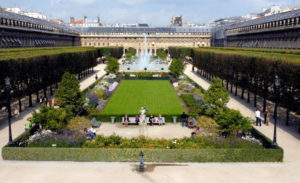
It has always come as a surprise to us that the Palais-Royal, although situated in the heart of Paris, is so often missed by visitors. Perhaps it’s because the entrance isn’t obvious or perhaps visitors are distracted by a visit to the Louvre, which is opposite. For a weary visitor, the beautiful gardens of the historic Palais-Royal are a haven of peace and relaxation away from the crowds of the Louvre and the hustle and bustle of the city.
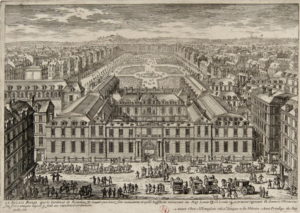
The original name of the palace was Palais-Cardinal, the private residence of Cardinal Richelieu. It was designed for him by Lemercier, the architect who also designed the original Sorbonne, and its construction began in 1633 and completed in 1639. The palace became the property of King Louis XIII after the death of the Cardinal and acquired the name Palais-Royal.
It became the residence of a succession of royal occupants, including the exiled Henrietta Maria and Henrietta Anne Stuart, wife and daughter of the deposed and executed King Charles I of England. Henrietta Anne married the King’s brother, Philippe de France, Duc d’Orléans in 1661.

During her residency in the palace she created the ornamental gardens, said to be the most beautiful in Paris at the time. The Palais-Royal also became the social centre of the city, with court gatherings and lavish parties becoming famous not only in Paris but throughout the country. It was occupied by an assortment of royalty until Louis XIV built built, in his eyes, a more suitable palace at Versailles. He hated the Palais-Royal, having spent a number of miserable years there as a child.
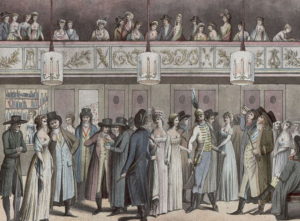
Over the ensuing centuries, the Palais-Royal experienced a vivid history. It has served as a royal residence, became the site of revolutionary fervour in the 18th century, and in the 19th century suffered the indignity of being the location for establishments of ill repute and gambling dens, as immortalised by the novelist Balzac.
Yet even before Balzac’s day, in the 18th century a certain Madame Montansier, originally head of the theatre at Versailles, who took over the Théâtre des Beaujolais at the Palais-Royal after the Revolution, owned 17 arcades in the complex. She rented out two for prostitution, while others were said to be the place for “the gathering of thieves, crooks and cheaters who filled the city.”
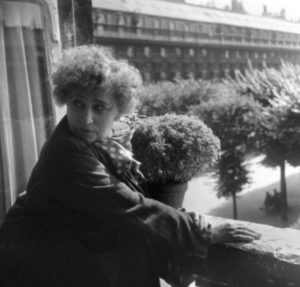
Just before the Revolution, the Palais Royal passed to Louis-Philippe, Duc d’Orleans. Always short of cash due to his profligate lifestyle, he had parts of the building converted into rentable properties such as some shops at ground level and apartments above. Over the years, these apartments have been home to many famous residents such as the actor, writer and sculptor Jean Marais, the artist Jean Cocteau and his neighbour and great friend, the novelist Colette. During Philippe’s time though, the reputation of the Palais-Royal as a hotbed of debauchery reached new heights, exacerbated by the fact that Philippe denied the police entry to the arcades and especially to any of the apartments above.
During the Revolution, it was temporarily renamed the Palais de l’Égalité, but reverted back to its name of Palais-Royal shortly afterwards.

The palace was modified in the 18th and 19th centuries, with a series of timber-fronted shops added, making the arcades a pioneer in the era of covered retail passages. Removed from the dirty streets, these passages became highly popular, transforming European shopping habits, particularly for ladies of the genteel upper and middle classes.
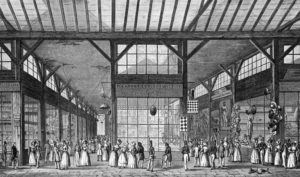
In 1830 the larger inner courtyard of the palace, the Cour d’Honneur, was enclosed on one side by what was probably the most famous of the arcades in Paris, known as the Galerie d’Orléans. It was demolished in the 1930s, but the columns were left still standing between the Cour d’Honneur and the very popular Palais Royal gardens.
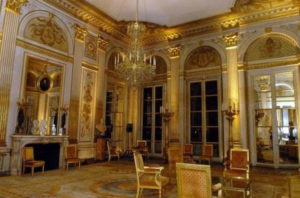
A large portion of the Palais-Royal now serves as the Ministry of Culture, the Conseil d’État and the Constitutional Council.
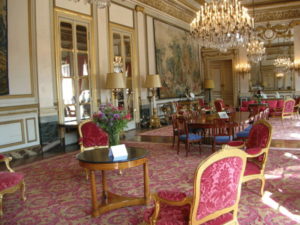
The inner courtyard of the Palais-Royal is the location of a highly controversial art installation called the ‘Les Deux Plateaux’, or more commonly, Colonnes de Buren, created by artist Daniel Buren in the 1980s. The project was the brainchild of the culture minister Jack Lang, who totally ignored the orders of the Commission des Monuments Historiques, which strongly objected to the scheme. The main objection these days is to the high cost of its maintenance.
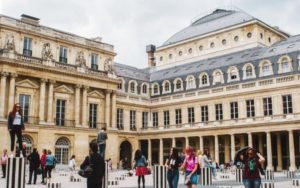
With its 280 black and white striped columns of varying heights, it has become one of the city’s favourite locations for many people taking selfies while balancing atop of one of the columns. Many people think the installation is fun, but just as many loathe it.
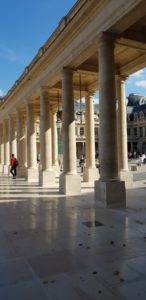
Although the whole domain of the Palais-Royal isn’t very large, every section of it is packed with treasures to discover.
The galleries around the perimeter are filled with high-end famous designer boutiques such as Stella McCartney, Marc Jacobs, Rick Owens, sought-after French footwear designer Pierre Hardy and luxury Italian bag-maker, Corto Moltedo, plus a number of upscale jewellery and small art galleries.
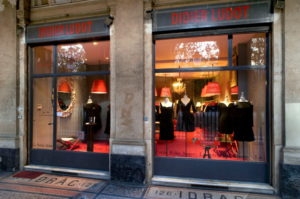
Perhaps you’d like to have a pair of exquisite gloves custom-made, in which case, Mary Beyer is the place to go, or a pair of Great Gatsby-style driving gloves from Maison Fabre (founded in 1924) is more your look. For vintage fashion lovers, head to Didier Ludot’s ‘La Petite Robe Noire’, Paris’s most famous name in vintage clothing—you might score a classic Chanel suit from the mid-1900s.
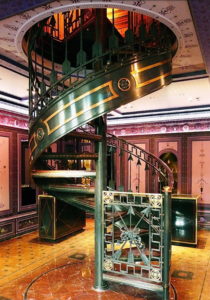
You can also have a perfume blended especially for you at Serge Lutens, who has a beautiful boutique at one end of the arcades.
As you stroll long the arcades you’ll discover some unique little shops such as ‘Au Duc de Chartres’, that specialises in antique heraldry, coins and medals, while ‘Les Drapeaux de France’ has been producing miniature lead soldiers for over 70 years.
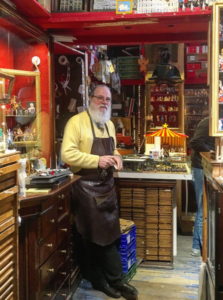
For lovers of traditional, hand-made wooden toys, ‘La Boutique du Palais Royal’ is a treasure trove, Anna Joliet sells exquisite antique music boxes, while other specialty shops sell antiquarian books, jewellery and other collectibles. Leave space on your credit cards for purchasing that special something that you didn’t know you wanted until you saw it here.
When you’re in need of a little refreshment, there are a number of chic little cafes, some with outdoor seating, or perhaps a gentle stroll under the huge canopy of trees, admiring the roses, magnolias, narcissus, classical statues and fountains.
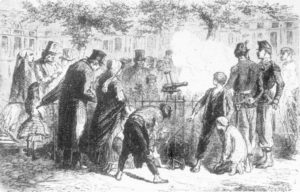
One fascinating feature which many visitors simply miss seeing is the miniature cannon standing on a little pedestal in the garden. The first was installed in the gardens on the Meridian Line of Paris in 1786 by a M. Rousseau, a local clockmaker whose shop was in the Galerie de Beaujolais at the northern end of the Palais-Royal. The cannon was originally fitted with a glass lens and a fuse, and fired when the midday sun hit the glass, enabling strolling locals to set their watches during the months of May to October.

It was moved to its present location in 1799, where it was still fired at noon, to the delight of visitors and locals until 1911 when the law imposed Greenwich Mean Time. Sadly, the cannon was silenced. It was stolen in 1998, but since 2010 a replacement is fired every Wednesday at noon.
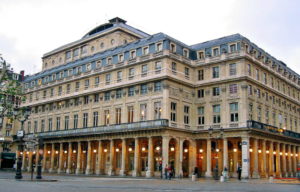
The Palais-Royal is also home two theatres. Located on Place André-Malraux, the Comédie-Française is one of the few state-owned theatres in France.
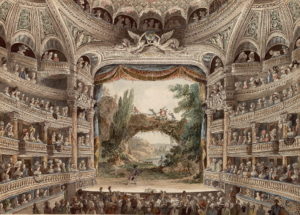
It’s considered the oldest active theatre in the world, founded in 1680 by a decree of Louis XIV and has been in its present location since 1799.
It’s had a number of name changes, including the Théâtre de la Republique and the Maison de Molière, since the playwright was regarded as the patron of French actors and the theatre was the venue for most of his works. Even after its name changed officially to the Comédie-Française, the company continued to be known as La Maison de Moliere.
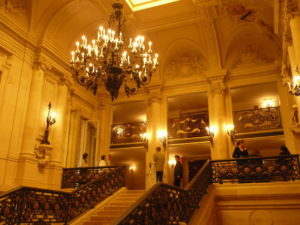
Nearly all the great actors and dramatists of France have at some time in their career been associated with the Comédie-Française. As decreed by Napoleon, the primary function of this theatre is to maintain the classical repertoire of Corneille, Racine and Molière.
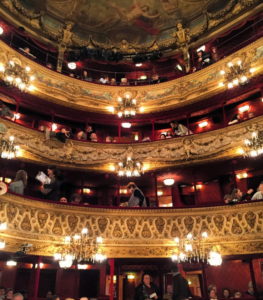
The other is the Théâtre du Palais-Royal, located at the northwest corner of the Palais-Royal, where the Galerie de Montpensier meets the Galerie de Beaujolais. Built in 1784, and originally known as the Théâtre des Beaujolais, it was a puppet theatre before a name change to the Théâtre Montansier, at which time plays and Italian opera were performed.
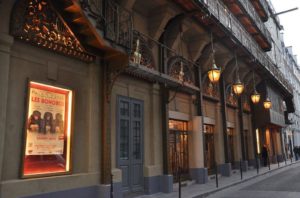
After the July revolution of 1830 its name changed yet again to Theatre du Palais-Royal and became a popular venue for comedies, farces and operettas such as Offenbach’s La Vie Parisienne. Today, the theatre continues to present plays and light entertainment.
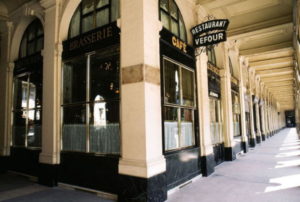
One of the most celebrated restaurants in Paris, Le Grand Véfour, first opened its doors in 1784 as the Café de Chartres in the arcades of the Palais-Royal. Bought in 1820 by Jean Véfour, who renamed it, Le Grand Véfour is considered the first grand restaurant in Paris. Since its inception, it has hosted a veritable Who’s Who of Parisian society, particularly from the arts and politics. The restaurant is supposedly where Napoleon proposed to Josephine. Victor Hugo, Emile Zola, Jean Cocteau (who designed the menus in 1948), Sartre and de Beauvoir, were regular patrons. A number of the restaurant’s chairs bear a brass plaque to commemorate the famous patrons who once dined there.
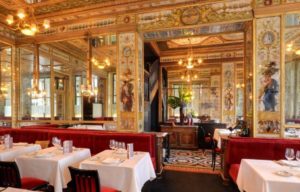
On 23 December 1983 the restaurant was destroyed in an anarchist bomb attack. It was bought by the Taittinger champagne house who restored the famous late 18th century ‘art decoratif’ interior, including the Pompeii-inspired frescos, allegorical figures and etched mirrors, and re-opened it. The loss of one of its 3 Michelin stars in 2008 under current owner-chef Guy Martin, mae headline news. Today, it still has 2 Michelin stars, its magnificent interior is a listed historic monument and is considered as grand as the cuisine. Ravioles de foie gras à l’émulsion de crème truffée, or Pigeon Prince Rainier III anyone?
Nowadays, you might say that the Palais-Royal is Paris in a nutshell. Its mixture of high quality shops, cafes, art, history, and classical architecture, all just across the street from an icon of French culture, the Louvre Museum. But also well worth remembering are the beautiful gardens that offer a quiet refuge in the centre of busy Paris.
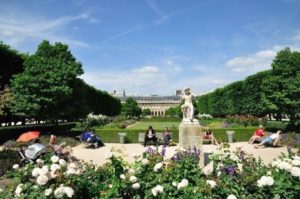


Leave a Reply